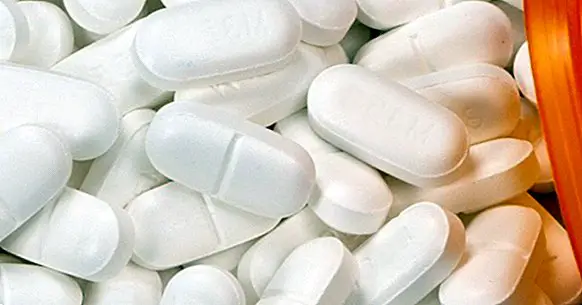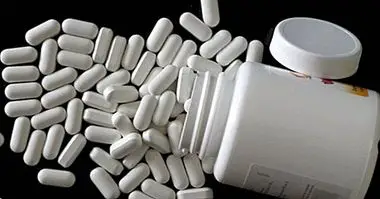Mirtazapine: effects and uses of this antidepressant drug
Major depression is one of the most known and common mental problems in the world. The high level of suffering and anguish generated by this disorder and its high prevalence has led to the emergence of numerous ways to treat it throughout history.
At present we have a wide range of possibilities, one of the most common strategies being the combined use of psychotherapy and psychopharmacology. Regarding the latter, it has generated various substances to combat depressive symptoms, one of them being mirtazapine .
- Related article: "Types of antidepressants: characteristics and effects"
Mirtazapine: how is this drug?
Mirtazapine is a substance with psychoactive properties useful in combating depressive symptomatology, being part of the group of antidepressants .
It is a relatively recent drug, a piperazan-azepinic compound analogous to mianserin, which has a tetracyclic structure and which acts as an agonist of noradrenaline and serotonin , increasing their levels at the brain level. Thus, within antidepressants it is classified as Noradrenergic and Specific Serotoninergic Antidepressant or NaSSa.
Mirtazapine is a drug whose effectiveness is high and at a level similar to that of other antidepressants such as SSRIs, apparently acting with a similar or slightly greater speed than these and having relatively few side effects (sexual and / or gastrointestinal symptoms less likely to occur). In fact, in the treatment for depression, some studies seem to indicate that mirtazapine has a greater effect than SSRIs after a treatment of six to twelve weeks
This medication is usually given by itself, although in some cases severe depression can be combined with other drugs such as venlafaxine in what is known as California Rocket Fuel to enhance the antidepressant effects, demonstrating greater effectiveness than some MAOIs and a better response and referral rate.
- Maybe you're interested: "Types of psychotropic drugs: uses and side effects"
Mechanism of action
The main mechanism of action of mirtazapine is due to its action on the noradrenaline and serotonin receptors of the nervous system, acting as an agonist of these hormones.
Said action is not due to the inhibition of the reuptake of said neurotransmitters, but is carried out by antagonizing the postsynaptic receptors of serotonin 5-HT2 and 5-HT3 together with that of the presynaptic receptors alpha 2. This generates that the release of serotonin and noradrenaline is increased, although it does not greatly alter its reuptake.
In addition to this we must take into account that also has an antihistamine effect , which can generate undesirable side effects by blocking and antagonizing histamine. To a much lesser extent but which nevertheless has to be taken into account, it has been found that mirtazapine also has mild anticholinergic effects, affecting the synthesis and transmission of acetylcholine.
Applications of this antidepressant
The mirtazapine Its main indication is approved major depression , in which it is effective and seems to act more quickly than compared to other antidepressants such as SSRIs.
However, although it is not indicated for other disorders, different tests have been performed in other mental conditions and even in medical problems in which mirtazapine seems to have a certain level of efficacy. For example, It has been proven effective in the treatment of anxiety disorders . Also in post-traumatic stress disorder and in obsessive-compulsive disorder.
At a more physiological level, although sedation and weight gain are secondary symptoms that are apparently undesirable, they can sometimes be an advantage in some patients. This is what happens, for example, with patients in advanced age or with anxiety problems, with weight loss or insomnia . It would also be applicable in patients with anorexia nervosa. Its antihistamine action could act to relieve the symptoms of itching and headaches.
- You may be interested: "Major depression: symptoms, causes and treatment"
Side effects and contraindications
Mirtazapine is a very useful medicine in the treatment of depression and other problems, but its action at the brain level can generate undesirable side effects for those who consume it.
Among these side effects, the most common are sedation and weight gain. that can generate their antihistamine effects. It is also common to generate dizziness and nausea, and also other problems such as constipation or dryness.It is not strange either that it generates a decrease of the arterial tension Less frequent they are the edemas facial, the vertigo and the increase of cholesterol and triglycerides, as well as the polyuria, agitation or anxiety. It can also generate hyper or hypokinesia. Finally, although very unlikely, there is a risk of agranulocytosis, dehydration, seizures, sexual problems, hallucinations, manic episodes and depersonalization.
The main contraindications of this psychotropic drug are found in those cases in which potential users suffer from heart problems (especially if they have recently had a heart attack), liver or kidney. Neither should patients with epilepsy, glaucoma or diabetes mellitus use it . Patients with urinary problems or mental disorders such as bipolar disorder or psychotic disorders also have it contraindicated. Nor is its use recommended during pregnancy or lactation.
Also, although it is sometimes used in combination with venlafaxine, its consumption is contraindicated with other psychotropic drugs, its combination with antidepressants MAOIs being particularly dangerous. can lead to a serotonin syndrome which can lead to cardiorespiratory arrest, hyperthermia, seizures, coma or even death. Nor should it be combined with alcohol or other drugs.
- Related article: "Serotonin syndrome: causes, symptoms and treatment"
Bibliographic references
- From Lucas, M.T. & Montañés, F. (2006). Use of mirtazapine in panic disorder. Psychiatrist Biol., 13; 204-210.
- Holm, K.J. & Markham, A. (1999). Mirtazapine Review of its use in major depression. Drugs, 57 (4): 607-631.
- Watanabe, N .; Omori, I.M .; Nakagawa, A .; Cipriani, A .; Barbui, C .; Churchill, R. & Furukawa, T.A. (2011). Mirtazapine versus other antidepressant agents for depression. Cochrane Database of Systematic Reviews, 12.



















